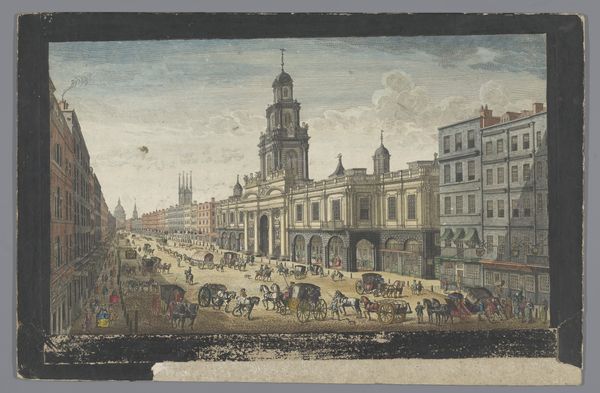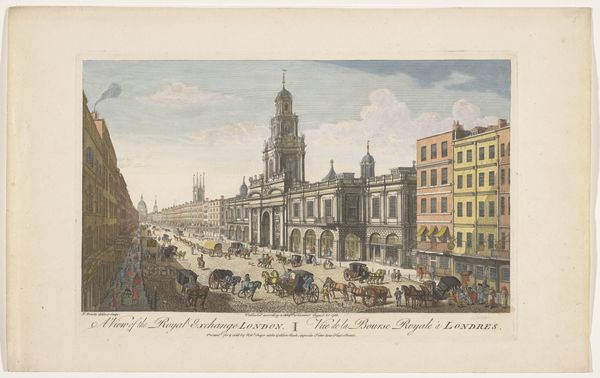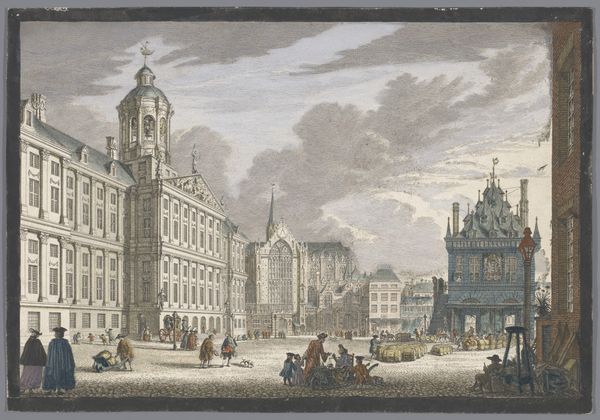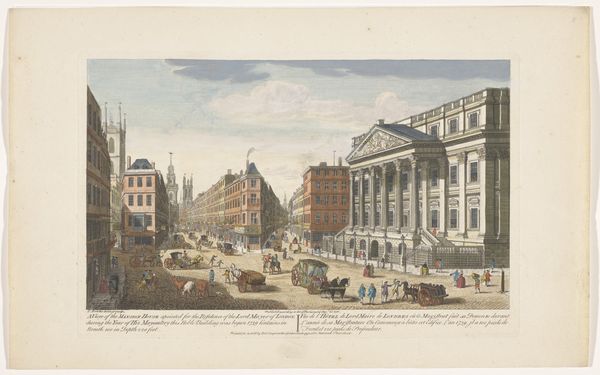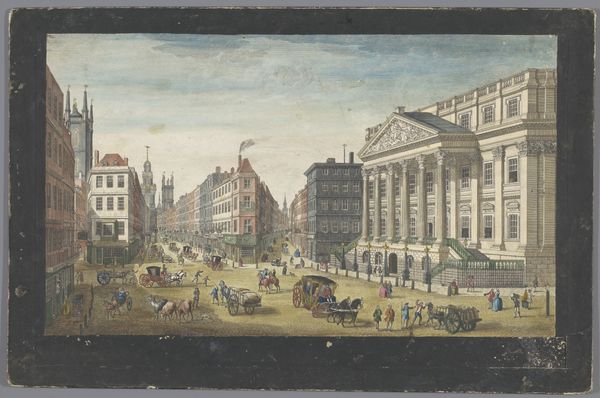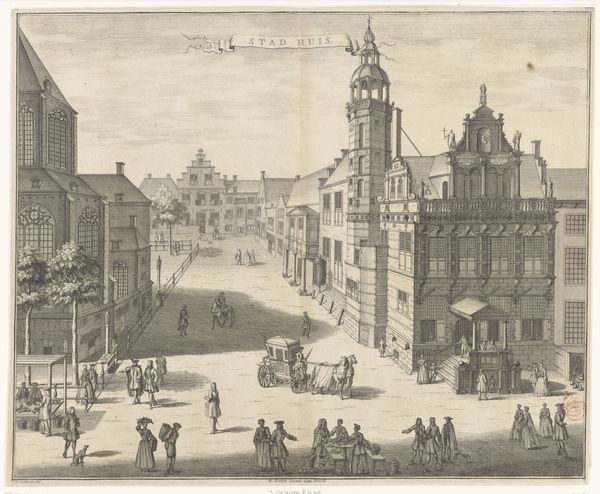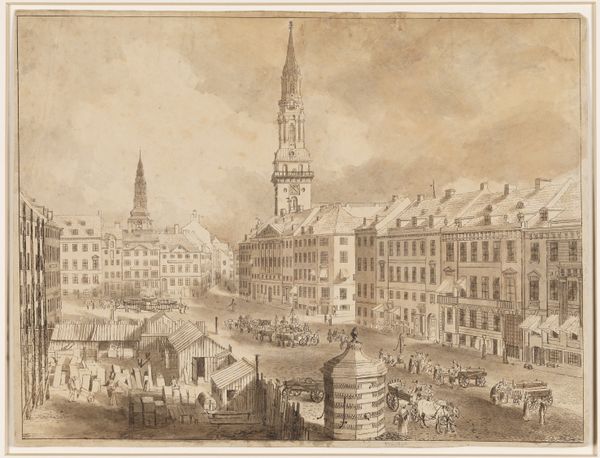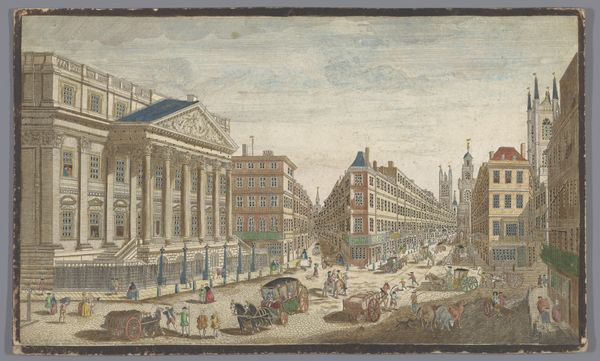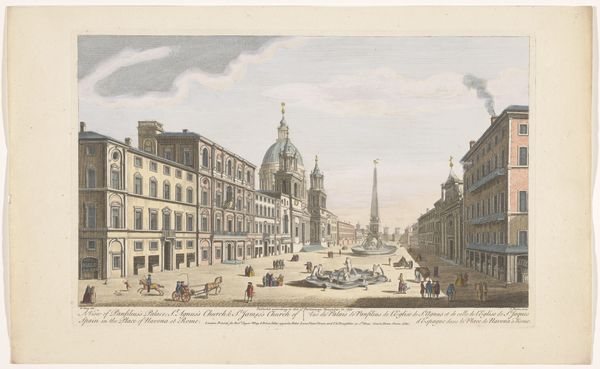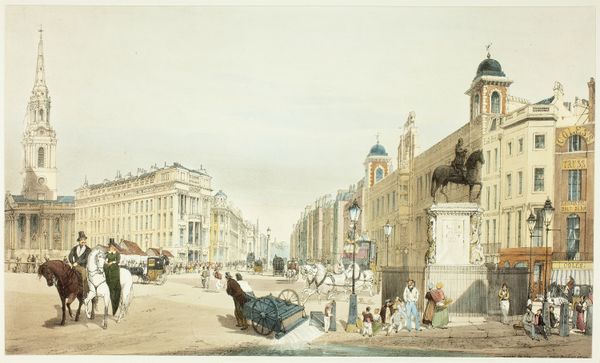
drawing, print, etching, watercolor
#
drawing
#
water colours
# print
#
etching
#
perspective
#
watercolor
#
coloured pencil
#
cityscape
#
genre-painting
#
mixed media
#
watercolor
#
rococo
Dimensions: height 248 mm, width 402 mm
Copyright: Rijks Museum: Open Domain
Editor: Here we have Robert Sayer's "Gezicht op de Royal Exchange te Londen," possibly from the 1750s, done in etching, print, and watercolor. The overwhelming impression is the bustling marketplace; I wonder what the story of this place is, who occupied it, and what social role it played at the time? Curator: That's a brilliant entry point. Let's consider this not merely as a cityscape but as a snapshot of burgeoning capitalism and its intersection with societal structures in 18th-century London. The Royal Exchange was at the epicenter of global trade, influencing hierarchies of power, wealth distribution, and even gender roles. Editor: Gender roles? How so? Curator: Notice how men dominate the depicted space, involved in commerce and trade. Women’s roles were very much delineated; while some women may have participated in family businesses, this sphere was undeniably male. The Exchange functioned as a performative stage where masculine identity was affirmed through economic power. Think about the exclusion and marginalization inherent in this visual landscape. Who isn’t represented here? Editor: So it's not just about pretty buildings and carriages, but also about power dynamics? What do the materials of watercolor and etching contribute? Curator: The seemingly delicate mediums are juxtaposed against a hard reality of global financial control. Watercolor and etching allowed for mass reproduction of this image. The perspective focuses attention on the Royal Exchange to normalize and even glamorize this central node of British imperial power. We must question the artist’s choices and whose interests they served. Editor: I never thought of it that way. I assumed it was just a nice city view, but there are deeper meanings to unpack about social inequalities. Thanks! Curator: Precisely! Analyzing art with historical context gives voice to unspoken narratives, enabling richer, intersectional understandings.
Comments
No comments
Be the first to comment and join the conversation on the ultimate creative platform.
